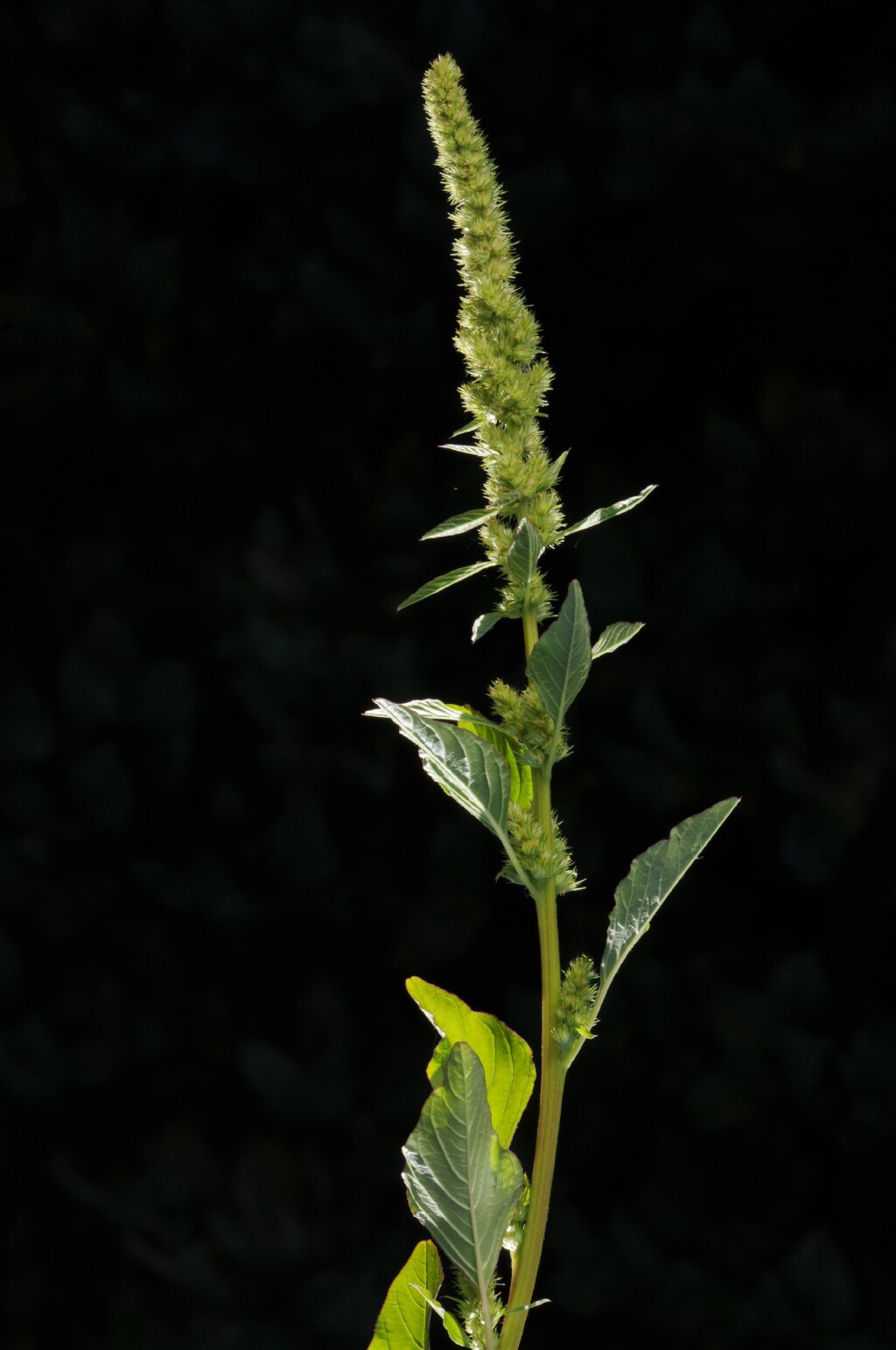Amaranthus powellii
S.Watson Powell's AmaranthErect or decumbent annual to 1.3 m high. Stems angled or grooved, glabrous to sparsely pubescent, sometimes reddish. Leaves long-petiolate, ovate to rhombic, lamina 1–10 cm long, 0.6–5 cm wide, entire; margin sometimes undulate; apex sometimes shortly mucronate. Inflorescence simple or few-branched, terminal and usually upper-axillary, the spikes to c. 8 cm long and 10–15 mm diam. Flowers unisexual; longest bracts and bracteoles, 4–6 mm long, broad and membranous at base, acuminate, strongly spinescent; tepals 3–5, oblong to narrowly oblanceolate, 2.5–3 mm long, acute; stamens as many as tepals. Utricle circumsciss, subequal to or slightly exceeding perianth; style-bases thick; seed discoid, 1–1.5 mm diam., brown, shiny. Flowers Dec.–May.
Wim, VVP, VRiv, MuF, GipP, WaP, Gold, CVU, NIS, EGL, EGU, HSF, HNF. Also naturalised WA, SA, Qld, NSW, ACT, Tas. Native to North America. A weed of gardens, crops and wasteland, scattered and common across southern Victoria, uncommon north of the Great Dividing Range (Castlemaine, Benalla and Bright areas).
Most early records (e.g. Willis 1973) of Amaranthus hybridus belong to this species.
Walsh, N.G. (1996). Amaranthaceae. In: Walsh, N.G.; Entwisle, T.J., Flora of Victoria Vol. 3, Dicotyledons Winteraceae to Myrtaceae, pp. 199–215. Inkata Press, Melbourne.
 Spinning
Spinning



